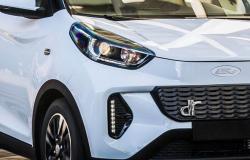The second half of the 80s were good times for Japan. At least on the surface because like any economic bubble, the consequences of it ended up overwhelming a good part of society well into the 90s.
The Asian country experienced enormous growth in those years. Investments in the country skyrocketed and its products They sold like hot cakes. outside its borders. As explained in The Salmon Blogthe economic boom turned Tokyo into the first stock exchange in the world and placed Osaka as the fourth, relegating the London stock exchange to fifth position.
Hand in hand with this bubble, sales of sports vehicles grew. Truly fast cars that quickly followed each other and positioned themselves in the market with alternatives for all types of budgets. From the cheapest to authentic supercars, Japanese manufacturers put cars on the market for anyone who wanted to spend the money they were accumulating.
These are the years of the Nissan Silvia and Skyline GT-R, the Toyota Supra, the Mazda RX-7 and other bombs such as the Honda NSX or the Mitsubishi Lancer EVO, among many others.
But like any good bubble, it also burst. And ahead it took wonderful cars, like the Toyota MR-2 or the great Autozam AZ-1 from Mazda.
And the same thing happened to the Dome Jiotto Caspita.
Caspita! A cool supercar appeared
Yes, we couldn’t resist this one terrible joke.
As we said, the end of the 80s were crazy in Japan. And if every young person wanted a sports car, they could not be any less the bosses and senior executives of companies whose value had skyrocketed. Just as the Autozam AZ-1 wanted to conquer an audience with less money, as well kei carthe Dome Jiotto Caspita sought its audience among the richest.
The name Dome refers to the company that developed the project. Dome has been a company that has grown in the competition and he has succeeded as a Japanese trainer of sports cars to make them compete in various categories.
However, their successes in competition could not be replicated on the street… although they cannot be considered failures either.
How do they count in Motor.es, the Dome Jiotto Caspita is not the first supercar that the company had come up with. Already in the 70s it had presented the Dome Zero, a wedge-shaped supercar that never reached production but, curiously, gave the company a strong boost.
Although they never managed to put the car on the street, the success of the prototype was overwhelming and they managed to make so much money in image rights (especially for the manufacture of toys) that the brand was able to improve its financing and continue growing.
With success knocking at the door and a public eager to take a good supercar to the garage, Dome once again tried the adventure of marketing his own car.
Thus, in the 1989 Tokyo Motor Show would present the Dome Jiotto Caspita, a spectacular supercar that quickly attracted all eyes for its figure, typical of a prototype to compete as Formula C. And that is precisely what they wanted to achieve: a car approved for driving on the street that could be transformed to compete with the lowest possible costs.
Given that silhouette, the car soon received the nickname “Formula 1 for the street.” The problem, as you imagine, is that he never saw the street. It was a supercar prepared to perform at its maximum and that received some technical elements directly inherited from Formula 1.
For example, it had active suspension with electronic control and its rear spoiler, which was part of the body itself, was retractable. Seeking maximum lightness, the chassis was made of aluminum and carbon fiber, which allowed it to add just 1,100 kg on the scale.

A figure that shined even more for having a 3.5 V12 engine that delivered 450 HP, which allowed it to go from 0 to 100 in 4.7 seconds. The engine was the work of the association between Subaru and Motor Moderni, who already had a 12-cylinder boxer engine in Formula 1 and with whom they supported the modest Italian team Coloni, which failed miserably in this category.
The project attracted attention and the possibility of manufacturing a very limited run of just 30 units. But the Coloni team disaster took Subaru out of its brief foray into Formula 1 and meant that the car never saw the light of day.
A few years later, Dome tried again. On that occasion he chose to motorize his car with a Judd GV V10 engine that was also inherited from Formula 1 and that raised the power to 585 horsepower. With a little more weight (1,240 kg) but still light, the Japanese prototype boasted of being able to reach 320 km/h top speed and accelerate from 0 to 100 km/h in just 3.2 seconds, detailed in Diariomotor.
But if on the first occasion there was a failure in Formula 1, on the second attempt the Japanese crisis of the 90s was encountered. Once the bubble burst, potential clients vanished and the project was no longer economically viable, so it was cancelled.
Images | Toyotacoronaexsaloon
In Xataka | This is how an electric supercar beat a Ferrari: it reached 0 to 100 km/h in just 1.4 seconds!








